If there’s a fork in the road, take it. If I hadn’t come upon a book with an eye-opening, unsourced paragraph about the Huntington Pottery, and found out the author’s papers were archived in Philadelphia Museum of Art, I would never have searched the museum’s website. And if i hadn’t searched the website, I never would have come upon these:
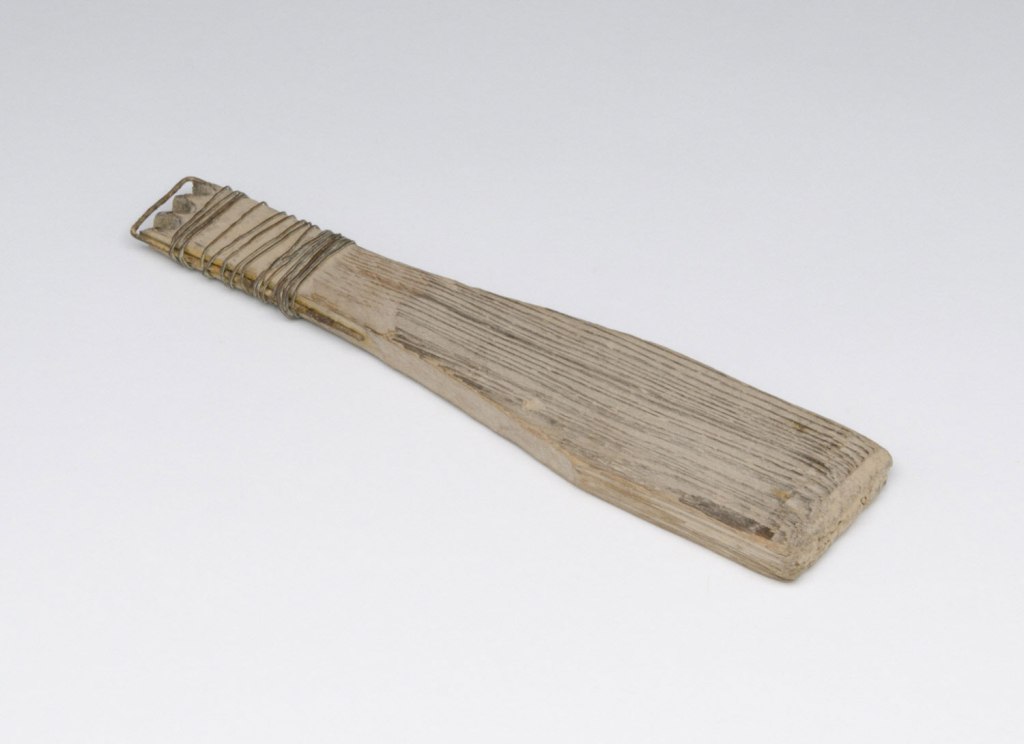
rib 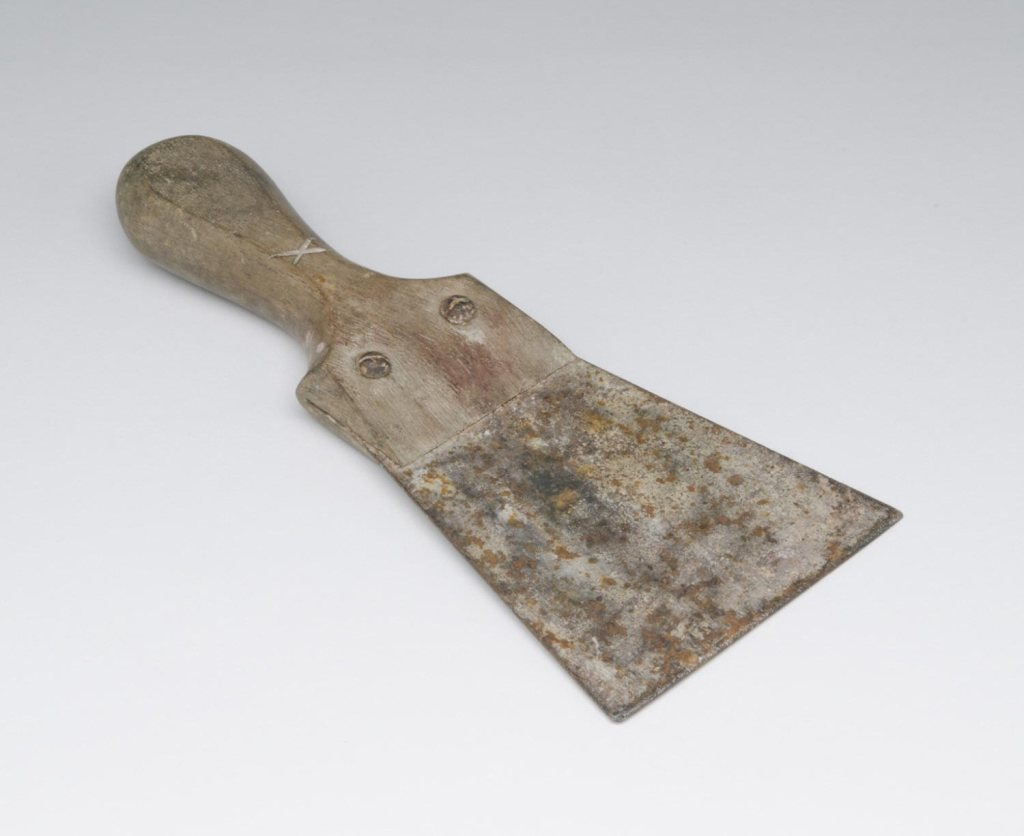
knife 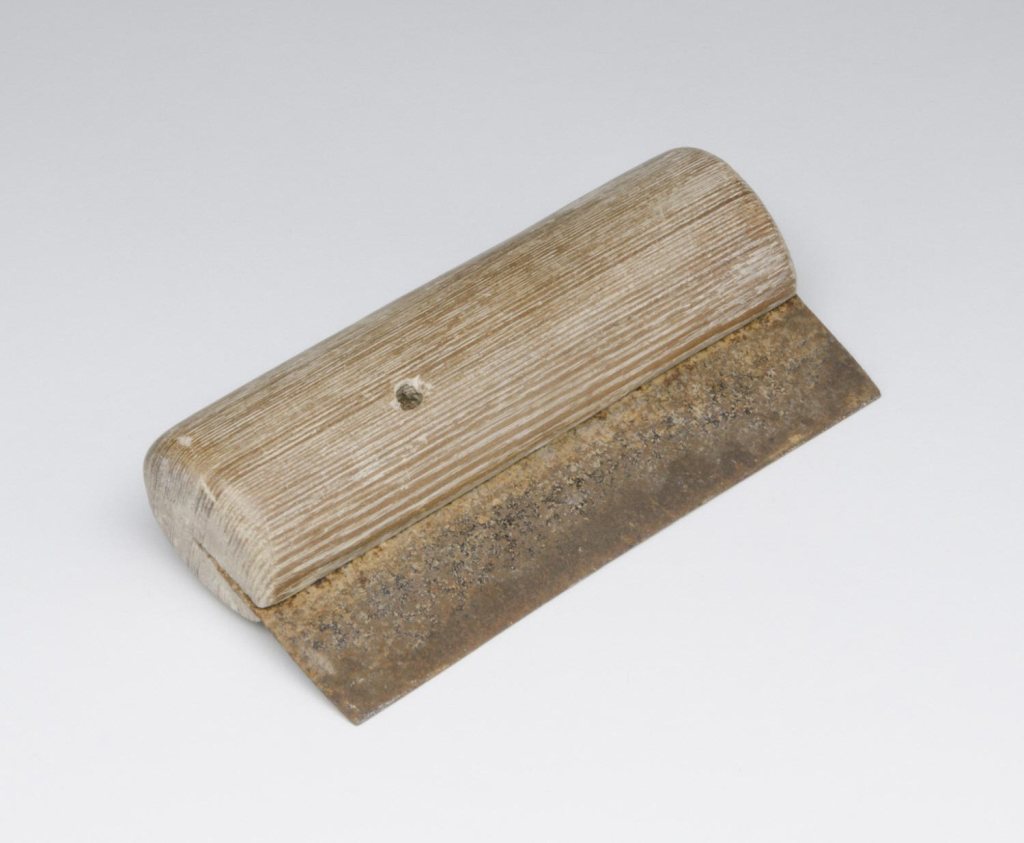
cutter 
coggle 
batter 
disc cutter 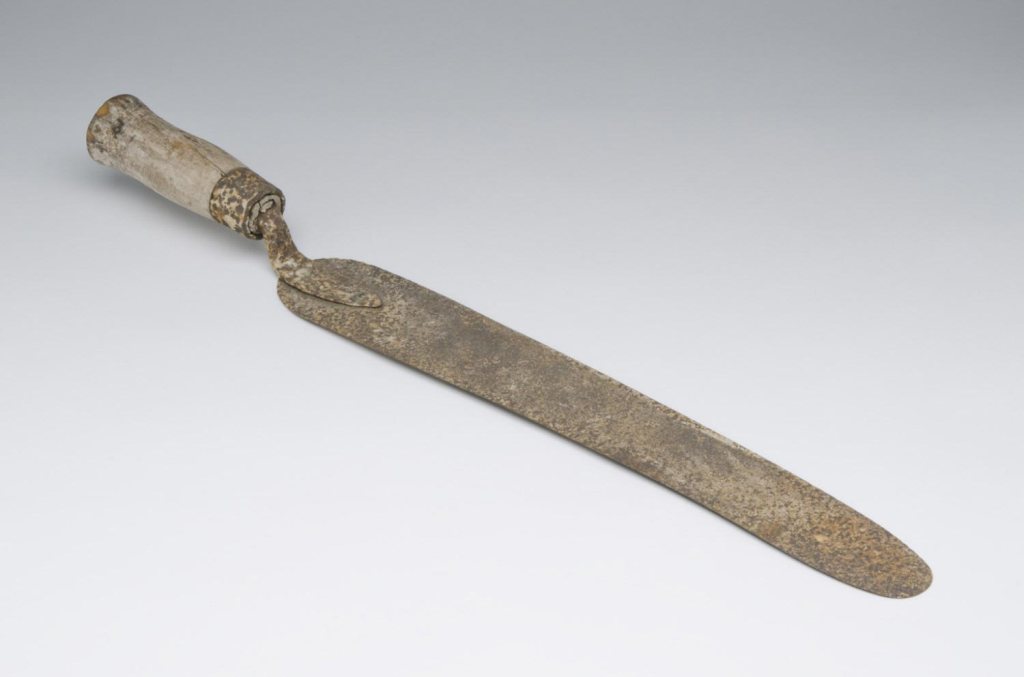
trowel
In 1912, Miss Clara B. Ray of Connecticut donated a set of potter’s tools from Huntington, NY to the Pennsylvania Museum, now the Philadelphia Museum of Art.
Some people like tropical beaches. My idea of a fun vacation is an Amtrak train ride, a modest hotel room, and permission to search the archives of the Philadelphia Museum of Art. In 2017, I did just that.
The Potter’s Tools in the Philadelphia Museum of Art Archives
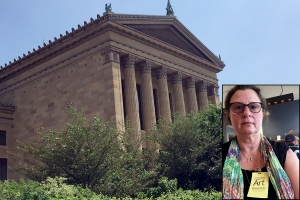
On a beautiful Spring day, I met a young woman at the museum who gave me a “Researcher” badge. My guide led down into the dungeons of the museum. At the end of a maze of basement corridors, she turned into a room filled with neat rows of giant metal cabinets. She stopped to hand me a pair of lime green examination gloves and walked around the handcart she’d prepared for me.
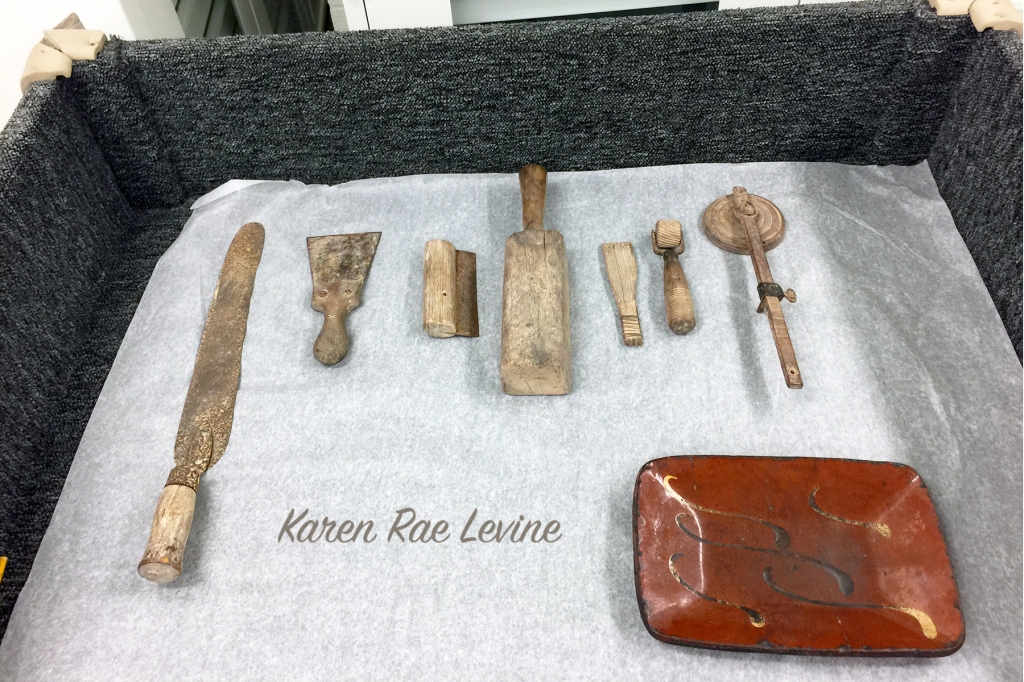
I’d been picking up shards of kiln furniture from the beach for years, wondering whose hands had formed them and how. I didn’t know precisely how each tool was used, but seeing the “how” and picking it up, weighing it in my gloved hands, was exciting. I confess that when my guide walked away for a moment, I took a glove off and picked up the trowel. I’d find out more about the redware platter later on.
The rib is a tool used at the pottery wheel. The rest were used in the process of creating redware plates and platters. A description of how these tools were used by the potter is included in the Appendix.
Rib
Batter
Coggle
Cutter
Disc Cutter
STILLMAN was a manufacturer of “saw sets” in upstate New York. This was made for the disc cutter, or, I imagine more likely, repurposed from a saw.
Knife
On a comprehensive list of potters in 1900, courtesy of Gary Hammond, there wasn’t a potter with the initials E.D or one named “Ed .” Edward Johnson was a traveling agent for the Pottery. Although not listed as a potter, maybe he would take a turn in the shop if need be.
Trowel
Redware Platter

Museum Photo 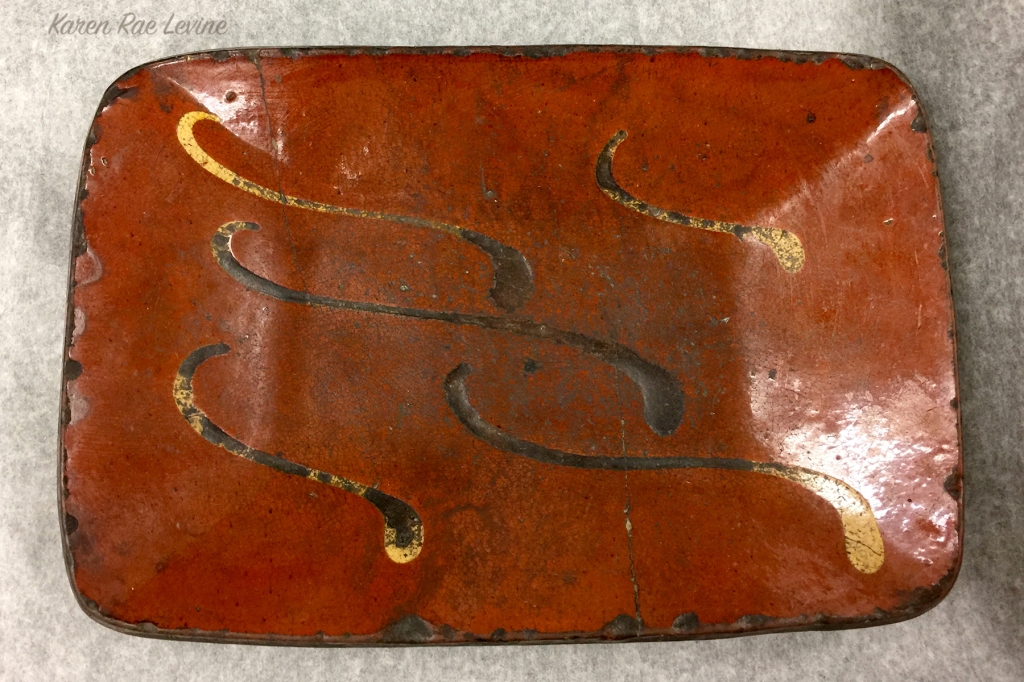
Author Photo 

The museum gives the redware platter a contradicting description: “Platter, Scudders Pottery Company, Huntington, New York. Made in Norwalk, Connecticut, c. 1825. Gift of Mrs. Robert W. de Forest, 1905.”
This wasn’t a random donation. Mrs. Emily Johnston de Forest (1851-1942) was a collector of Mexican maiolica, among other art, and her research papers are housed at The Metropolitan Museum of Art and The Philadelphia Museum of Art. Her husband had been president of the Met and they were both esteemed “patrons of the arts.” To draw the couple closer to Huntington’s art, they had a home in the neighboring town of Cold Spring Harbor.
Samuel Wetmore & Co. has been identified the owner of the Huntington Pottery from 1805 until 1825 (See Samuel J. Wetmore & Co.) After Samuel Fleet’s death in 1823, Moses Scudder was the only surviving partner until shortly before his death in 1827, and so Mrs. de Forest’s reference to “Scudder’s Pottery Company” c. 1825 would be accurate. The only real disparity in the notation is the claim that the platter was made in Norwalk, Connecticut.
Anthony J. Butera identifies the platter as Huntington ware, citing Romanah Sammis’s 1923 article in Antiques magazine. Three Huntington redware plates show an almost identical design that would be unique to a Huntington potter.

The Mystery of Miss Ray and The Pottery Tools
In 1902, the Brown Brothers Pottery was for sale and all the equipment was shipped to New Haven, CT… but not all of it.
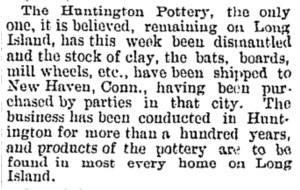
Ten years later, Clara Belle Ray, a resident of Connecticut, donated a set of Huntington’s pottery tools to the Pennsylvania Museum (now known as the Philadelphia Museum of Art).
A Connecticut native, Clara had a connection to Huntington through her sister, Laura. Laura married Brooklynite Vincent Ford in 1885 and sometime between 1890 and 1900, they moved to Huntington with their children. According to his obituary, Ford was “prominent in civil affairs of Huntington” and a member of the Huntington Historical Society. Laura was a member of a Huntington Historical Society committee chaired by Mrs. Sammis, mentioned above. [Long Islander, Dec 21, 1917]
Why did Clara choose the Philadelphia Museum? It’s unclear. She may have had a existing connection because by 1920, after the death of Laura and Vincent Ford in 1918, Clara Belle Ray and Laura’s daughter, Clara Ray Ford, were living in Marion Township, Pennsylvania, less than 10 miles from the museum.

Whatever the case, thanks are due to Clara Belle Ray, who preserved these historic pottery tools. Clara didn’t make them easy to find, but at least she donated them to a museum.
Appendix
The following book excerpts describe the uses of the tools shown above. [Tulip Ware of the Pennsylvania German Potters by Edwin Atlee Barber, 1903]

Small Pie Plate Mold.
Batter or Pounder.
Roller.
Disc Cutter.
Slip Cup or Quill Box.
Coggles or Decorating Wheels.
Ribs or Smoothers.
THE POTTER’S WHEEL
SMOOTHERS, OR “RIBS.”
After the jar or crock had been formed, the surface was smoothed by holding against the outside, while yet revolving, a tool called a “rib,” which was a small piece of wood, leather or calabash, of square or rounded form, usually having a hole in the center for the thumb and finger. This was a simple affair, made by the workman to suit his requirements. Then a wet sponge was passed over the surface of the clay, both on the outside and inside, to give it the finishing touches.
MAKING PIE PLATES.
POUNDERS OR “BATTERS.”
An implement of wood, flat on one side and rounded on the other, with a handle at one end, was employed for beating or pounding out the clay roughly into a flattened form, which was the first stage in the process of plate making. These sheets of clay, which resembled in appearance enormous buckwheat cakes, were then piled one on top of the other to the height of about a foot.
DISC CUTTERS.
After the clay had been rolled out into a thin, even sheet, an implement called a disc cutter was used to cut circular pieces of different diameters, as required. This tool consisted of a wooden arm supported on one end by a small foot or block of wood, of circular or octagonal form, in which the arm revolved, and at the other end was a metal point, usually a common horseshoe nail, which passed through it at a right angle, with the point down. The small block of wood on which the arm revolved was grasped with the fingers of the left hand and set on the soft clay as near the center of the sheet as could be calculated, and held there while the right hand of the operator carried the arm completely around the circle. The nail or metal point cut its way through the plastic clay and turned out a perfect disc. The diameter of the circle was regulated by transferring the cutting nail to different holes in the end of the implement. These “bats,” as they were called, were then laid on boards to become partially dry. To prevent the clay from sticking while being batted and rolled, the bench was first sprinkled with dust, a supply of which had been gathered during the summer from the highway, carefully sifted and laid away for the winter work.
MOLDNG DISHES.
At this point in the process the clay was about half dry. In order to shape the plate or dish a mold was used. This was made of clay, very thick and heavy and baked hard, in shape resembling a clumsy, heavy pie plate. The mold was placed on the table with the rounded side up and with both hands the potter, with considerable force, threw or slapped one of the discs on the mold, with the decorated side downwards. This throwing was repeated two or three times in order to cause the disc to partly assume the shape of the mold. The clay was then rubbed with the hand of the potter over the entire surface until the disc adhered closely to the mold in every part. The surface was then smoothed with a spatula or knife after a wet sponge had been passed over it. Turning the mold over, the potter then with the spatula trimmed the clay close to the edge of the mold.
DECORATING WHEELS, OR “COGGLES.”
The formed plate was then ready to be loosened from the mold, and, after being lifted off, a tool called a “coggle,” was run around the edge to make the little notches or indentations which are so characteristic of the old-time pie plates. The earliest of these wheels were cut out of wood, but at a later date they were made of iron. Such implements are yet in use in country potteries.










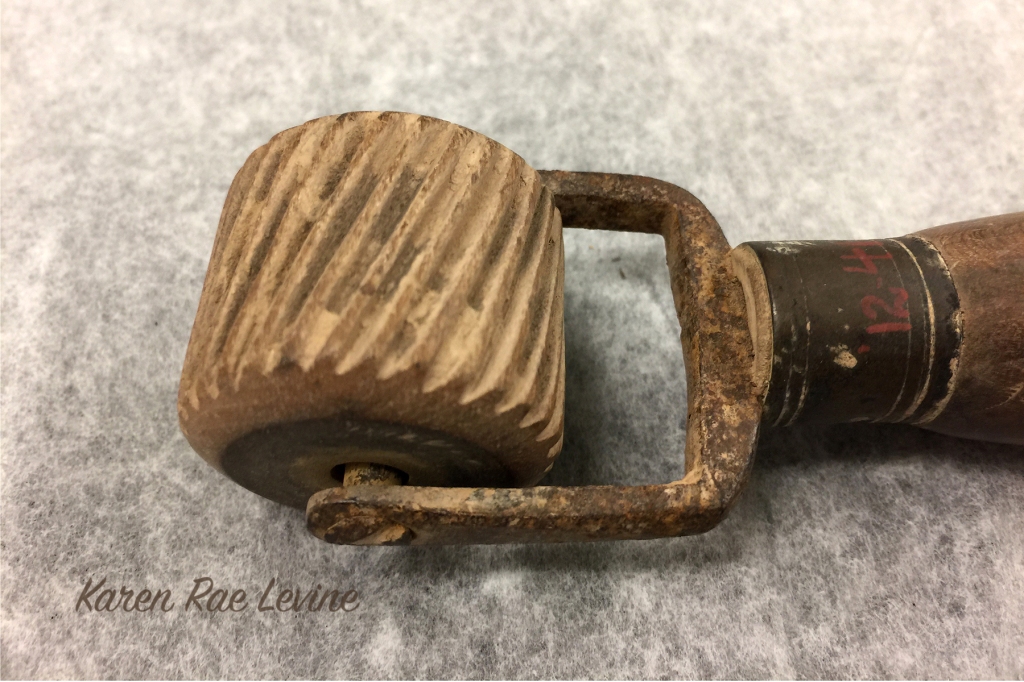
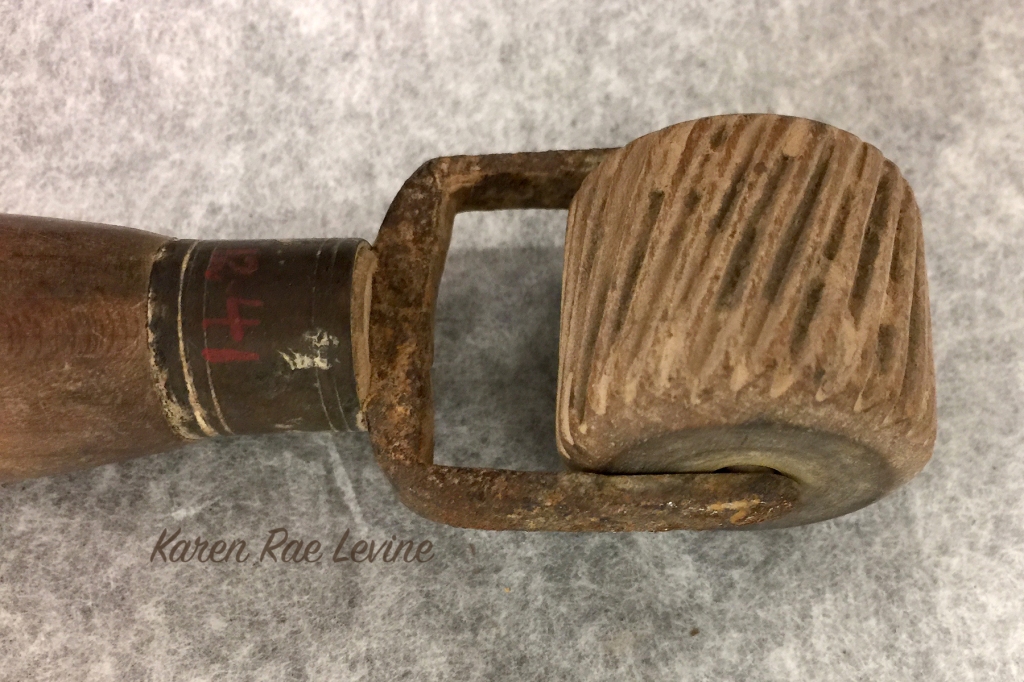

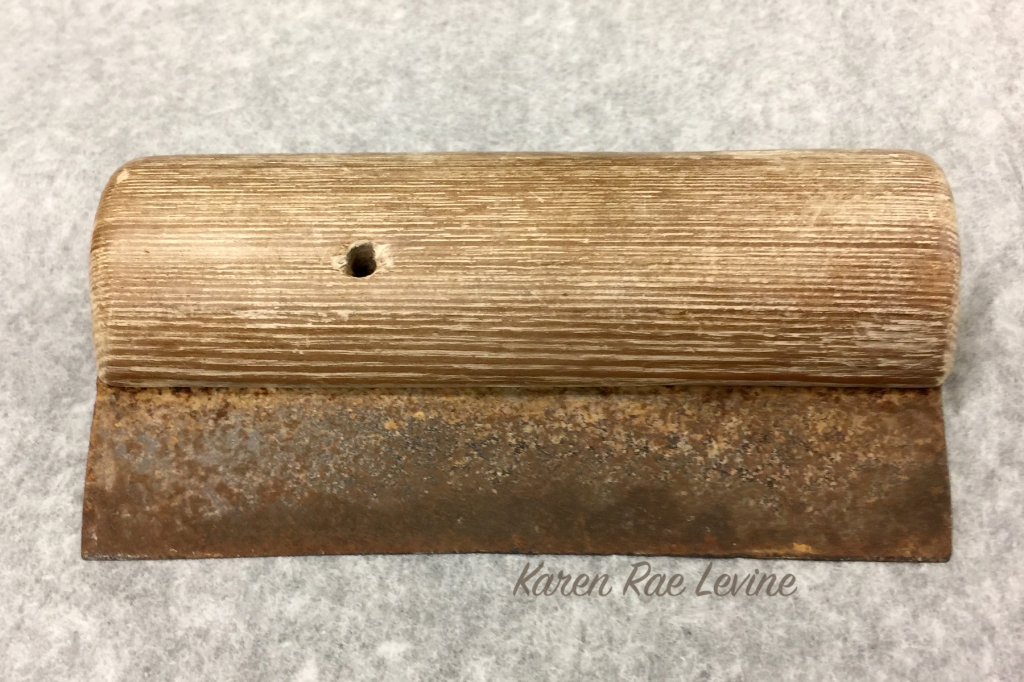


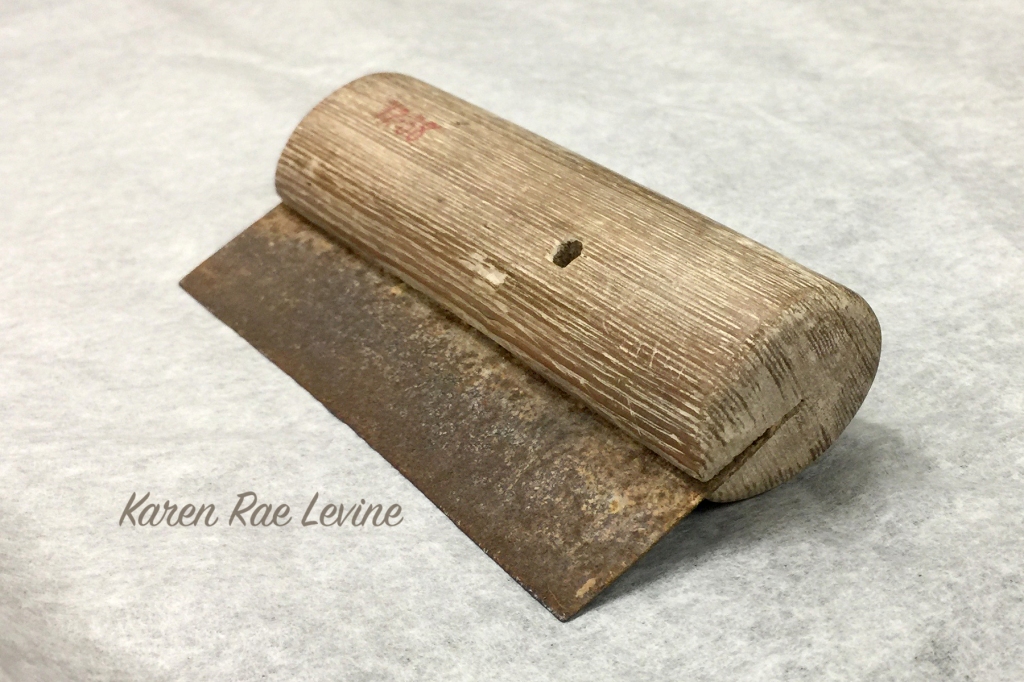


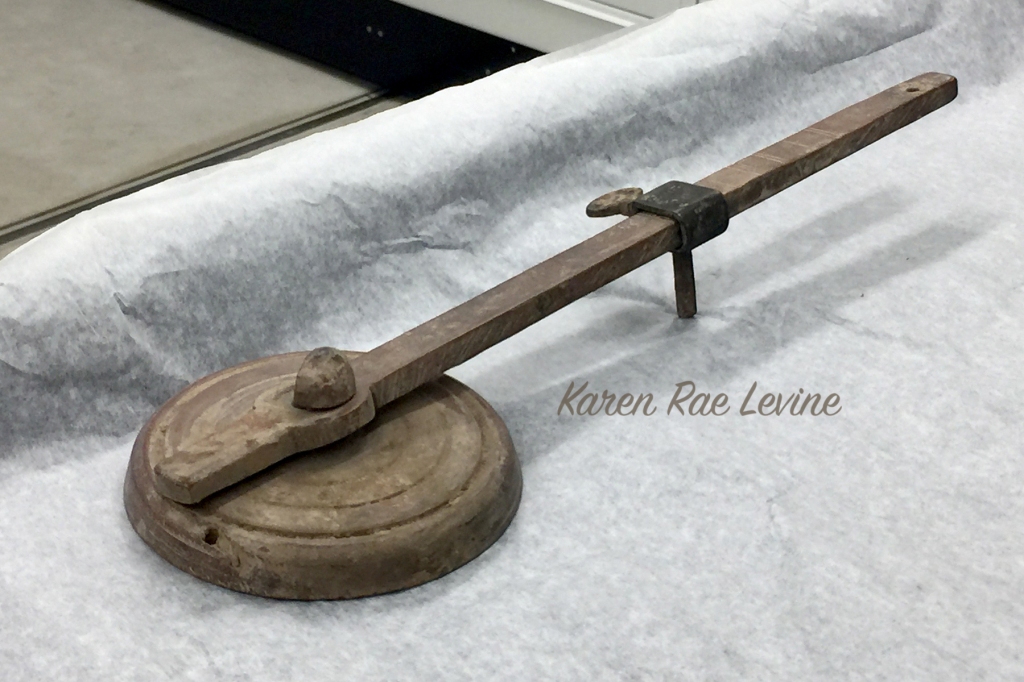


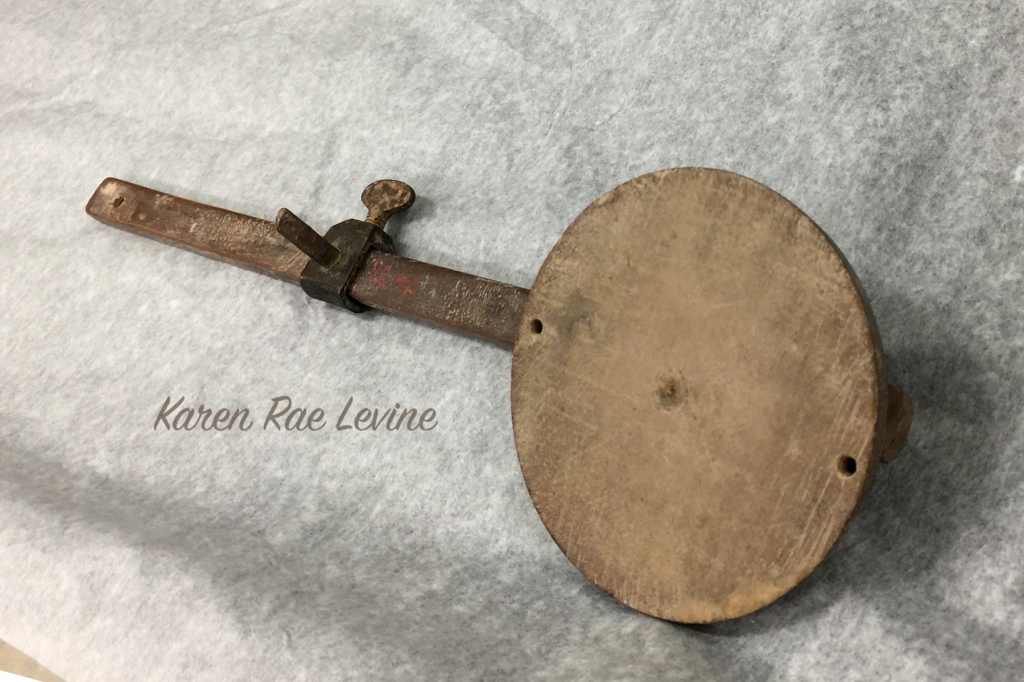



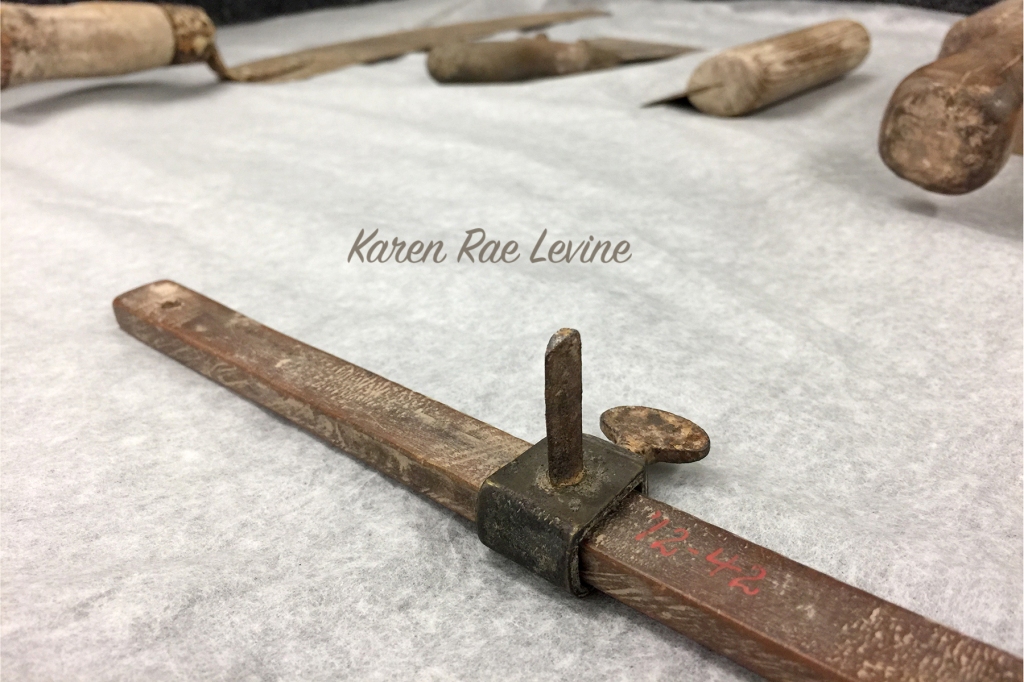





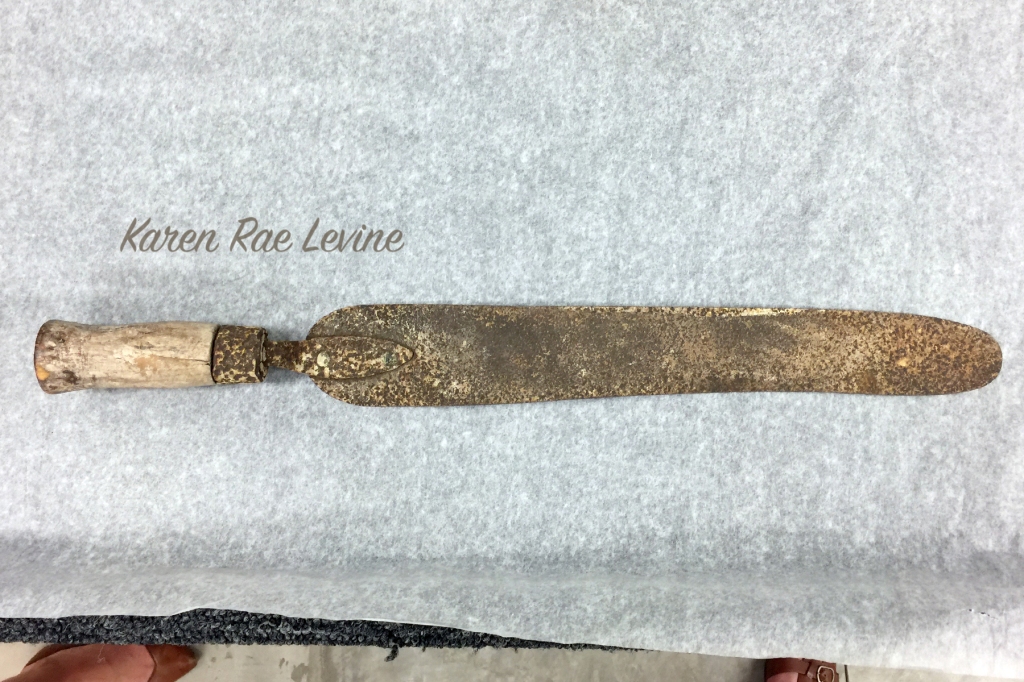

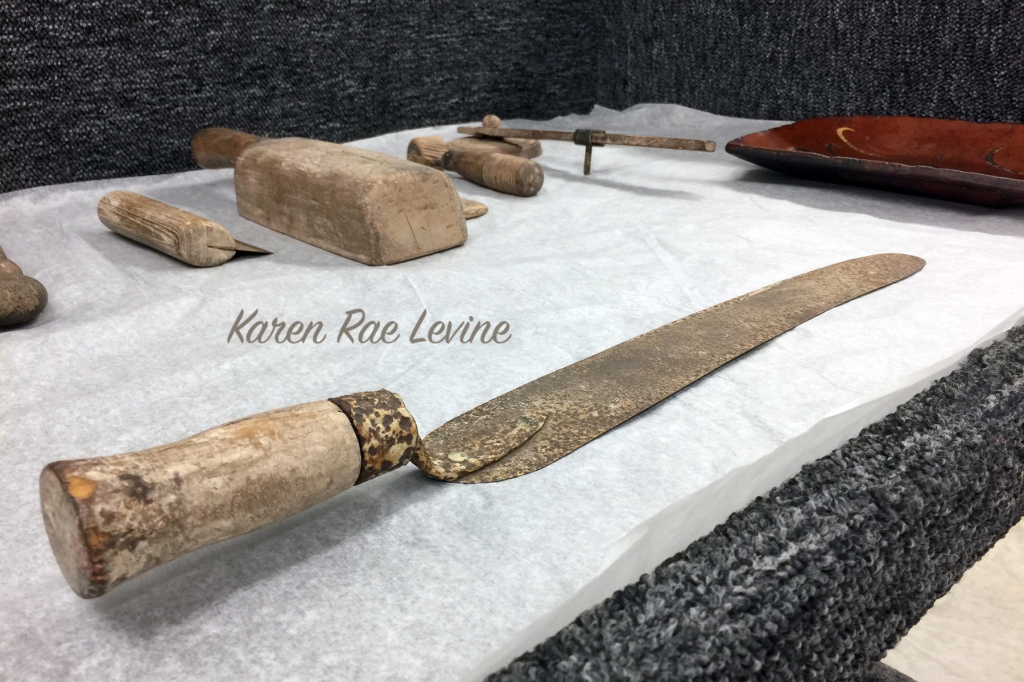
I am a States… and just today learned that I am of Dutch ancestry (not German). I would love to know how some of our family members might have an opportunity to see the work of our ancestors. Thank you so much for the fascinating article.
LikeLike
Christina, see collections at Monmouth County Historical Soc. in New Jersey and large collection of States pottery at Lighthouse Museum in Stonington, Ct. While in Stonington walk out onto the stones at the end of Shinbone Alley and pick up some artifacts right there on the rocks of kiln furniture (wedges, shims, setting tiles)
LikeLiked by 1 person
To clarify above post, Matthias States was the potter for investor Col. James Morgan at Morgan’s pottery on the Cheesequake Creek in South Amboy, NJ. The Monmouth County Historical Society has several examples of Matthias’ work on display.
Further, Shinbone Alley is now part of the tiny Mashantucket Pequot Preserve in Stonington Bourough. It’s a short walk from the Lighthouse Museum.
LikeLiked by 1 person
I really loved it there.
LikeLike
Hi Christina, I’m so glad you enjoyed the article about the States family. (In a different post than this one.) There’s a wonderful museum in Stonington, CT with many examples of States pottery and information about the States history as potters in the area. The museum is in an old stone lighthouse and the nearby water’s edge is strewn with pottery shards. The last photo in the post shows a portion of the exhibit. https://www.stoningtonhistory.org/visit/the-lighthouse-museum/ It would be a post-pandemic visit, of course. Good luck with your family history search!
LikeLike
Christina, there’s another States descendent who commented on this post: https://huntingtonpottery.home.blog/2019/06/04/adam-states-of-connecticut/
LikeLike
As a Potter myself I was intrigued how some of these tools are used today but ours are usually made of plastic, rubber or steel. I would love to find what you found- and I would probably be tempted to use them in my studio. But I am glad you took them to the museum!
LikeLiked by 1 person
I didn’t take them to the museum, I was just happy to find out they were there and I could see and touch them. I admire your skills. I’ve tried it so I know it isn’t easy 🙂
LikeLike
Michael, do you have the birth and death dates for Matthias States?
LikeLike